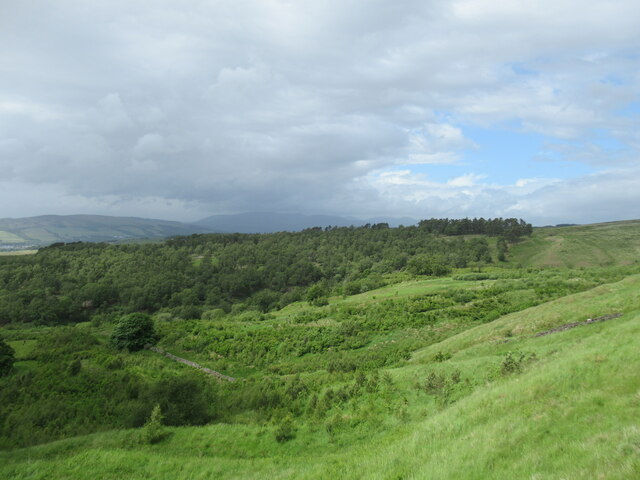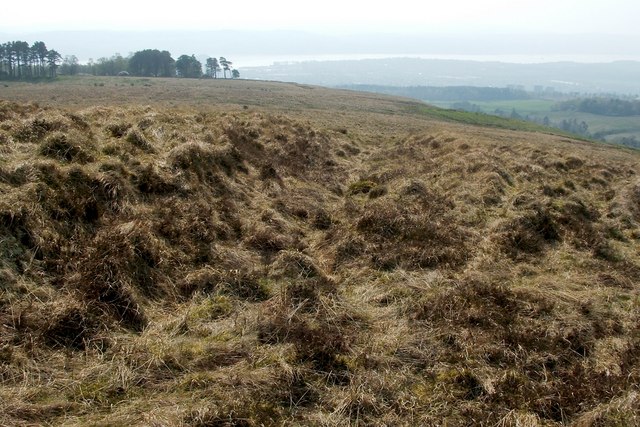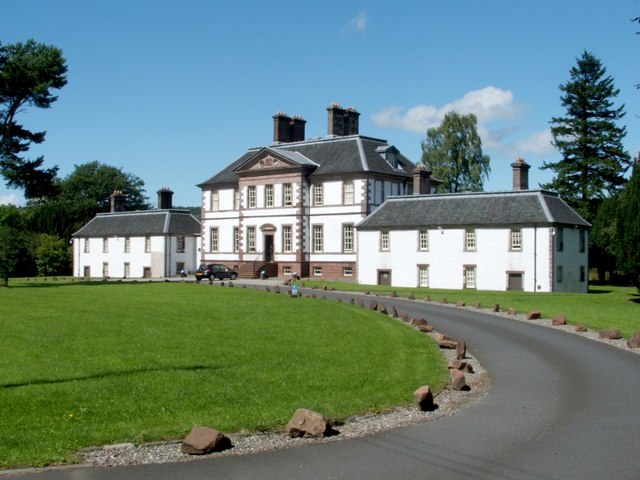Murroch Glen
Valley in Dunbartonshire
Scotland
Murroch Glen

Murroch Glen is a picturesque valley located in Dunbartonshire, Scotland. Nestled between the rolling hills and surrounded by lush greenery, this glen is a natural haven that offers a serene and tranquil escape from the hustle and bustle of everyday life.
The glen is characterized by its stunning landscapes, with its meandering river, Murroch Burn, flowing through the valley. The crystal-clear waters of the burn create a soothing ambiance as they gently cascade over the rocky terrain. The glen is also home to a diverse range of flora and fauna, with native Scottish wildflowers dotting the landscape and various species of birds and small mammals inhabiting the area.
Walking trails wind through Murroch Glen, offering visitors the opportunity to explore its natural beauty up close. The trails take visitors through ancient woodlands, where they can discover the remnants of old stone bridges and other historical features. As they follow the paths, visitors are treated to breathtaking views of the glen and the surrounding hills, providing ample opportunities for photography and enjoying the tranquility of the area.
For those seeking outdoor activities, Murroch Glen offers fishing opportunities in the Murroch Burn, where anglers can try their hand at catching salmon or trout. The glen is also a popular spot for picnicking, with designated areas that allow visitors to relax and enjoy a meal amidst the stunning scenery.
Overall, Murroch Glen is a nature lover's paradise, offering a truly breathtaking and peaceful experience for all who visit.
If you have any feedback on the listing, please let us know in the comments section below.
Murroch Glen Images
Images are sourced within 2km of 55.96866/-4.5437617 or Grid Reference NS4177. Thanks to Geograph Open Source API. All images are credited.


![Remains of an ancient farmhouse This long-abandoned farmstead does not appear, even as a ruin, on the first-edition OS map (surveyed in 186o), nor on any subsequent OS maps. It is not even shown on Roy&#039;s Military Survey of Scotland (1740s-50s); evidently the farmstead had already been abandoned by that early date. Since it is not shown on any maps, its name is, for now, unknown.
[This farmstead had not hitherto been reported to WoSAS, so I submitted a report for their database. The ruin lies within an area that has recently been purchased by the Woodland Trust Scotland, so additional details may well come to light; incidentally, the WTS have been made aware of the site, and are, I am pleased to say, amenable to its preservation.]
The farm building itself is located in the lower half of the photograph, and fills most of the width of the image, but it is not very easy to pick out on the ground, let alone in a photograph. Traces of the more distant of the two long side walls follow the far edge of the green area that makes up the foreground (specifically, the lower half) of the image; the other side wall is just in front of it. One of the end walls is beside the line of tufts of tall grass on the right. The other end wall is beside the taller tufts at the left-hand edge of the image.
For a view along the length of the building from its eastern end, see <a href="https://www.geograph.org.uk/photo/2357007">NS4277 : Remains of an ancient farmhouse</a>.
No exposed stone is visible here. The footings of the building are apparent only as indistinct ridges in the grass. Nevertheless, it was possible to follow the building&#039;s outline on the ground. It measured approximately 9.4 metres long by 4.1 metres wide, with its long axis oriented WNW-ESE. At least one cross-wall was also apparent, dividing the building into rooms; the largest room was at the western end (on the left, in this image), and was 5.5 metres long (that figure includes the width of the western wall of the building and that of the dividing cross-wall). There may have been another cross-wall very close to the eastern end of the building, creating a narrow space there, but it was hard to tell, given the faintness of the ruins.
The building is set on high ground between the Overtoun Burn (which is to the south-east) and the Garshake Burn and the Black Burn (to the north-west). Only a metre or two to the north of the building is the steep valley of a stream that drains into the Garshake Burn; the building is perched almost at the edge, and would certainly have commanded a fine view to the west and the north.
The farm building lies at the northern corner of a more or less rectangular enclosure that has the same orientation as the building, and which measures 85 metres (WNW-ESE) by 45 metres. This enclosure is very faint on the ground; see the end-note for an annotated satellite image(*). The full extent of the farmstead may be much greater.
[(*) For a much more revealing satellite view of these remains, I would recommend using the &quot;Historical Imagery&quot; function in Google Earth, and looking at the imagery for this area that is dated Jan 28th, 2005. In that dataset alone, the sun&#039;s angle of illumination is exceptionally shallow, making the farm building visible, revealing the rectangular enclosure to the south, and even showing cultivation patterns within the enclosure. In satellite images taken on other dates, these features are more or less invisible.]
More obvious, both on the ground and in satellite imagery, are the outlines of some irregular sub-enclosures that are located within the eastern half of the main enclosure.
Just to the south-west of the enclosure, a braided trackway (a closely-grouped and intertwining set of old tracks) passes nearby. Many of the tracks are worn fairly deep, but all of them are seen most clearly in the 2005 satellite imagery that was mentioned above. These tracks are probably at least as old as the farmstead, and they lead for a considerable distance to the north-east, mainly in the direction of Meikle White Hill (<a href="https://www.geograph.org.uk/gridref/NS4478">NS4478</a>), where lime-kiln ruins have been reported.
[A similar system of braided trackways begins near <a href="https://www.geograph.org.uk/gridref/NS42087781">NS42087781</a>, on the other side of the Garshake Burn, and forms a very extensive network there, leading to many sites where there are traces of limestone quarrying or of ruined lime-kilns (the lime-burning industry flourished in this area in the eighteenth century). For further details, see <a href="https://www.geograph.org.uk/photo/1692778">NS4278 : Signs of former industry at the Spouts Burn</a>, which discusses one of the sites to which these tracks lead.]](https://s1.geograph.org.uk/geophotos/02/35/70/2357037_913e2efa.jpg)












Murroch Glen is located at Grid Ref: NS4177 (Lat: 55.96866, Lng: -4.5437617)
Unitary Authority: West Dunbartonshire
Police Authority: Argyll and West Dunbartonshire
What 3 Words
///stack.sofas.fans. Near Bonhill, West Dunbartonshire
Nearby Locations
Related Wikis
Our Lady and St Patrick's High School
Our Lady & St Patrick's High School is a six-year co-educational comprehensive Roman Catholic school, situated in the Bellsmyre area of Dumbarton, Scotland...
Bellsmyre
Bellsmyre is a large housing estate in the town of Dumbarton in West Dunbartonshire, Scotland. Located on the edge of the Kilpatrick Hills in the northeast...
Dunbartonshire
Dunbartonshire (Scottish Gaelic: Siorrachd Dhùn Breatann) or the County of Dumbarton is a historic county, lieutenancy area and registration county in...
Strathleven House
Strathleven House is an early 18th-century country house in West Dunbartonshire, Scotland. It is located in the Vale of Leven, around 3 kilometres (1.9...
Have you been to Murroch Glen?
Leave your review of Murroch Glen below (or comments, questions and feedback).



